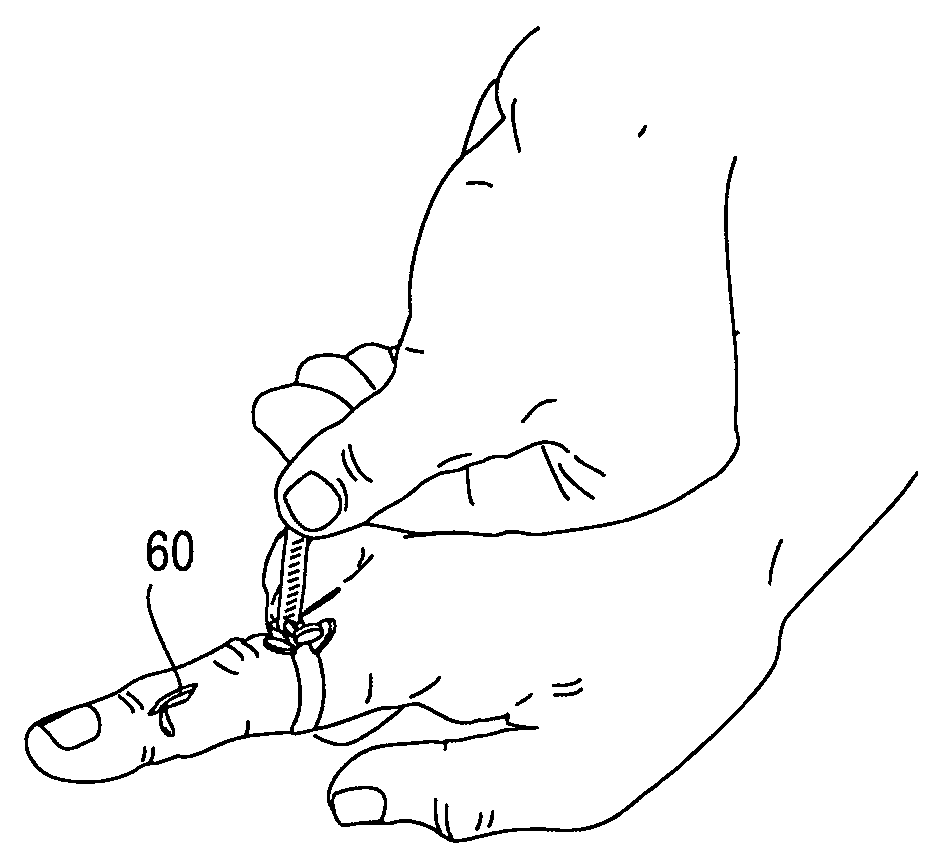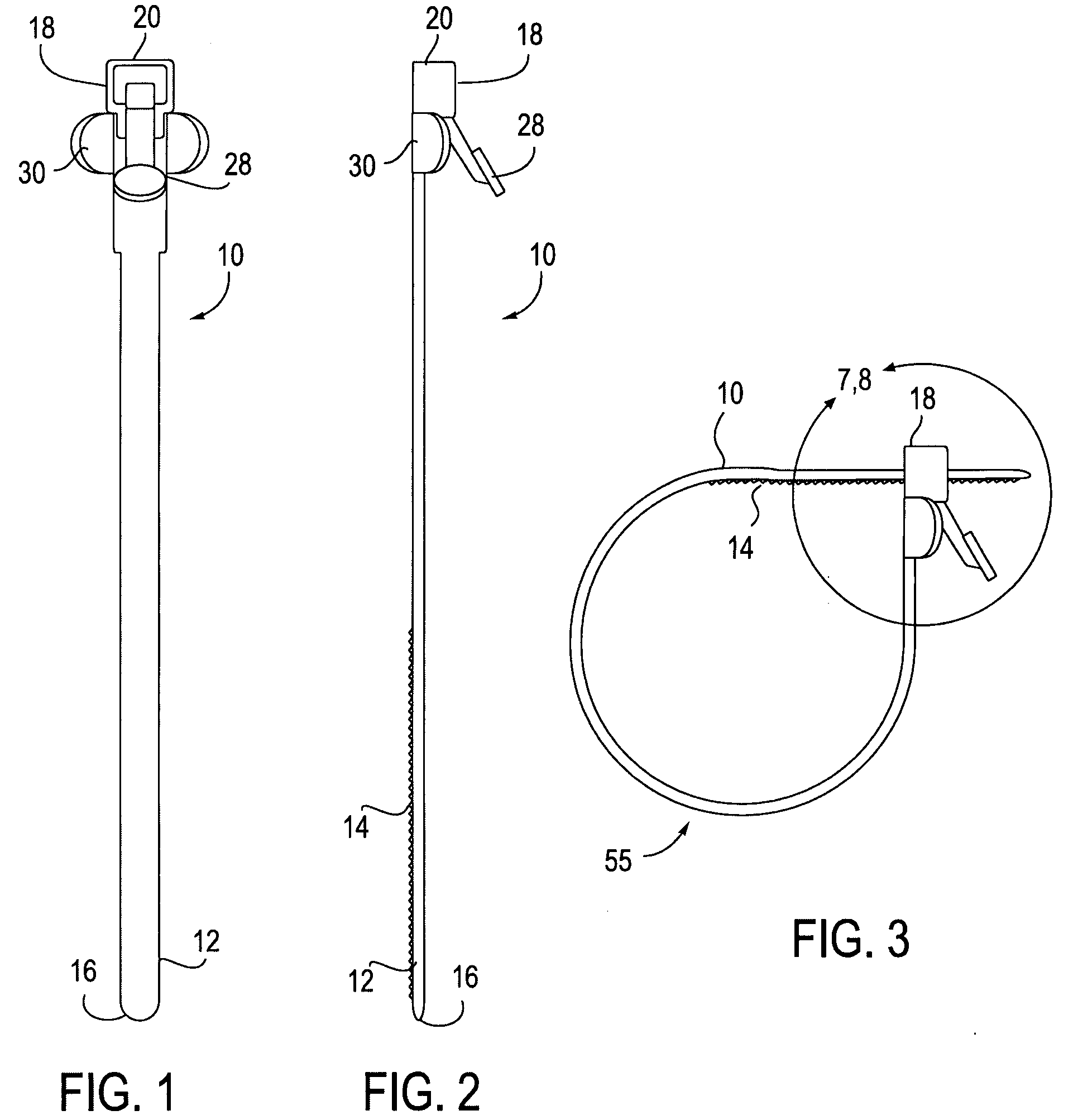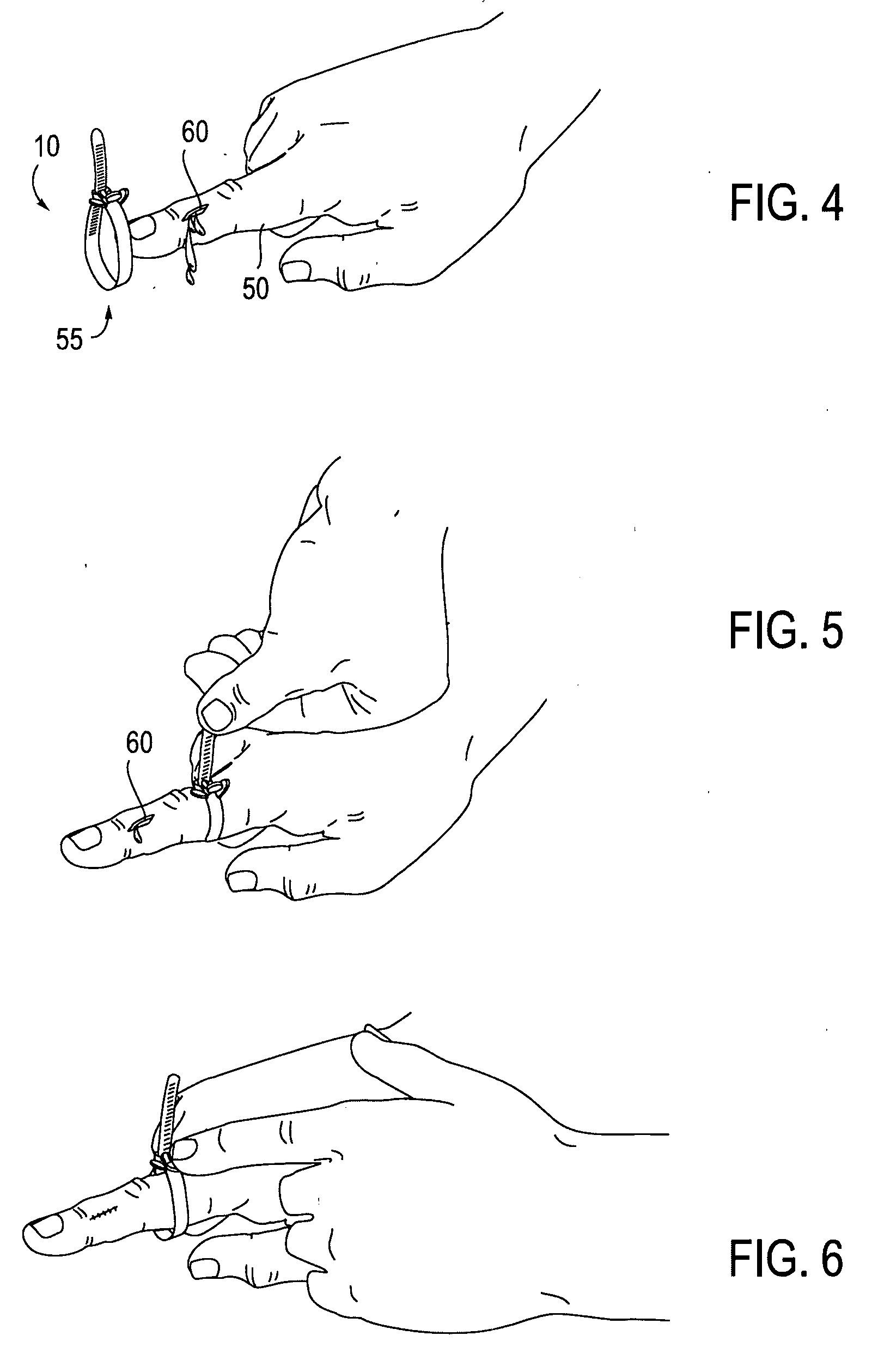Method and apparatus for restricting blood flow
- Summary
- Abstract
- Description
- Claims
- Application Information
AI Technical Summary
Benefits of technology
Problems solved by technology
Method used
Image
Examples
Embodiment Construction
[0018]For a better understanding of the present invention together with other and further objects, advantages and capabilities thereof, reference is made to the following disclosure and appended claims in connection with the above described drawings. FIG. 1 illustrates a releasable cable tie 10 of the present invention which operates in a manner such as certain cable ties offered for construction applications like those offered by KAI SUH SUH Enterprise Co., Ltd., as shown at http: / / www.allproducts.com / ee / kss / cable_tie.html. The cable tie 10 may be made from Nylon or plastic which has sufficient rigidity to prevent the tie from folding or rolling as pressure is applied, although any suitable material can achieve the objectives of the present invention. The cable tie 10 is preferably a single use application where the tie is sterile and enclosed in a sealed package until its ready for use. It is well suited for many locations, such as operating rooms, emergency rooms, urgent care cen...
PUM
 Login to View More
Login to View More Abstract
Description
Claims
Application Information
 Login to View More
Login to View More - R&D
- Intellectual Property
- Life Sciences
- Materials
- Tech Scout
- Unparalleled Data Quality
- Higher Quality Content
- 60% Fewer Hallucinations
Browse by: Latest US Patents, China's latest patents, Technical Efficacy Thesaurus, Application Domain, Technology Topic, Popular Technical Reports.
© 2025 PatSnap. All rights reserved.Legal|Privacy policy|Modern Slavery Act Transparency Statement|Sitemap|About US| Contact US: help@patsnap.com



